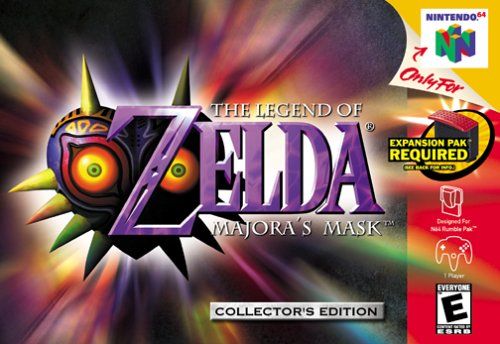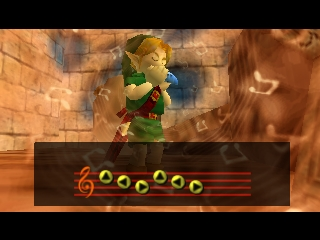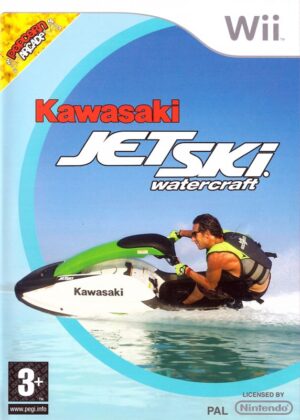Retro Replay Review
Gameplay
The Legend of Zelda: Majora’s Mask builds upon the familiar foundations of Ocarina of Time, offering players a blend of classic swordplay, dungeon exploration, and inventive puzzle-solving. At its core, Majora’s Mask retains elements such as heart containers, bombs, and bow-and-arrow combat, while introducing fresh wrinkles like active shield blocking and more intricate throwing item mechanics. The inclusion of the ocarina melodies remains central—whether you’re turning back time, calling your horse, or simply soothing a restless soul, the songs you learn guide every step of your journey.
(HEY YOU!! We hope you enjoy! We try not to run ads. So basically, this is a very expensive hobby running this site. Please consider joining us for updates, forums, and more. Network w/ us to make some cash or friends while retro gaming, and you can win some free retro games for posting. Okay, carry on 👍)
Where Majora’s Mask truly distinguishes itself is in the three-day time system. You have exactly 72 in-game hours—translating to roughly 72 real-life minutes—to thwart the moon’s impending crash into Termina. This looming deadline infuses ordinary tasks with high stakes: chatting with an NPC at the right hour, collecting a specific mask, or finding a hidden dungeon entrance all demand precise time management. Fortunately, the “Song of Time” and its variants let you reset the clock or slow its passage, preserving quest items and progress even as the world reverts to its first day.
Masks in Majora’s Mask serve not only as collectibles but as keys to new abilities and story arcs. Beyond the three transformation masks—Deku Scrub, Goron, and Zora—there are over twenty optional masks that unlock side quests, grant special perks, or simply add flavor to the world. Learning how and when to use these masks, combined with discovering owl statues for quick travel, encourages experimentation and rewards thorough exploration. Mini-games, hidden treasures, and the intricately scheduled routines of Termina’s inhabitants round out a gameplay loop that balances urgency with discovery.
Graphics
Though released on the Nintendo 64, Majora’s Mask boasts vibrant colors and distinctive character designs that remain charming decades later. Its expressive art style leans into slightly exaggerated proportions, from the unsettling moon with its gaping grin to the whimsical Deku Scrub townsfolk. The environments—from the haunting, fog-laden Swamp to the snow-capped peaks of Snowhead—demonstrate a surprising atmospheric range for the hardware, often feeling more cohesive and mood-driven than its predecessor.
Character animations are notably fluid, with transformation sequences for each mask form feeling particularly satisfying. Link’s shift into Deku form, lumbering as a Goron, or gliding as a Zora each features unique movement and attack animations, providing visual feedback that reinforces the gameplay mechanics. Even minor NPCs appear to follow a schedule, strolling through the marketplace or disappearing into buildings at set times, lending a sense of life and continuity to Termina.
Performance-wise, Majora’s Mask maintains a steady framerate on original hardware, though some slowdown can occur in busy areas or dungeons with multiple effects. The moon’s ominous presence is accentuated by its looming size and near-constant shading effects, which cleverly maximize the N64’s capabilities. While textures can appear blocky by modern standards, the artistic direction and bold color choices ensure the world remains legible and engaging, even during long sessions pressed against the ever-ticking clock.
Story
Majora’s Mask picks up immediately after Link’s victory in Hyrule, only to plunge him into a darker, more intimate adventure. Ambushed in the Lost Woods by the mischievous Skull Kid, Link is transformed into a Deku Scrub and stripped of his horse, Epona, and Ocarina. This abrupt twist sets the tone for a story that is far more melancholic and surreal than typical Zelda fare, as the fate of Termina hangs by a thread beneath the looming visage of a malevolent moon.
The narrative unfolds through a tapestry of personal quests and character-driven vignettes. Each region of Termina—whether it’s the bustling Clock Town or the eerie Ikana Canyon—features NPCs with their own schedules and dramas. A poet strives to finish her masterpiece before the world ends, a masked assassin schedules clandestine meetings under the moonlight, and countless other tales interweave to form an emotional mosaic. As Link assists these individuals, he gains masks that not only aid his progression but deepen the player’s connection to the land.
Unlike more linear Zelda entries, Majora’s Mask encourages exploration of side stories that reveal themes of loss, acceptance, and hope. The Skull Kid’s tragic journey—from playful trickster to mask-possessed pawn—adds a layer of pathos seldom seen in the series. Through time manipulation and mask transformations, Link learns that heroism isn’t just about defeating monsters but about understanding and helping those around him, even when the clock is ticking down.
Overall Experience
Majora’s Mask delivers one of the most unique experiences in the Zelda franchise, combining tight action-adventure mechanics with a time-based structure that demands planning, curiosity, and emotional investment. The constant pressure of the three-day cycle can be exhilarating, transforming even routine tasks into race-against-the-clock challenges. Yet the ability to reset time while preserving key progress ensures that exploring every nook and cranny remains thoroughly rewarding rather than outright punishing.
The game’s rich side quests and memorable characters lend exceptional replay value. Discovering the optimal window to complete an event, mastering each transformation mask’s unique abilities, and witnessing the world’s various “what-if” scenarios invite players to return again and again. Despite its aging hardware, the art design and melodic soundtrack continue to captivate, reinforcing the haunting beauty of Termina and its bittersweet narrative.
For those seeking a fresh take on the Zelda formula or a deep, emotionally charged adventure, Majora’s Mask stands as an essential journey. Its willingness to embrace darker themes, coupled with inventive gameplay systems, ensures that Link’s race against time remains as compelling today as it was at release. Whether you’re a longtime fan or new to the series, this dark gem offers an unforgettable quest that lingers in the mind long after the moon has been averted.
 Retro Replay Retro Replay gaming reviews, news, emulation, geek stuff and more!
Retro Replay Retro Replay gaming reviews, news, emulation, geek stuff and more!









Reviews
There are no reviews yet.